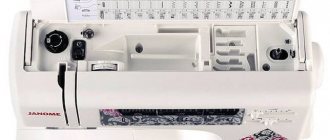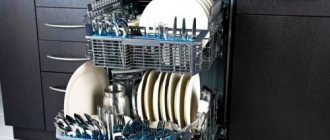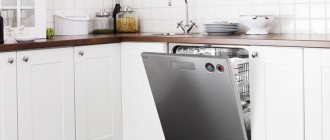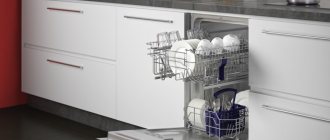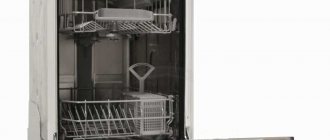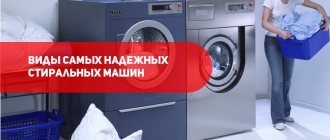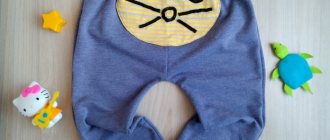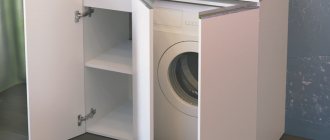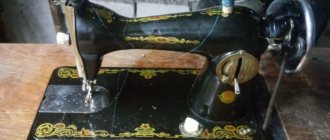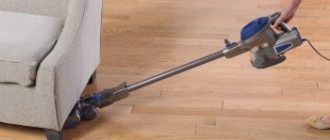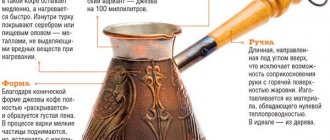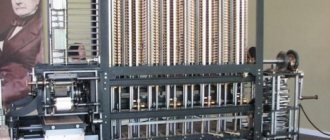What types of sewing machines are there and do you even need to understand it? A specialist in sewing production or a consultant in a store must know all types of sewing machines and their purpose. We are more interested in the question, what type of sewing machine to choose so that it can sew almost any type of fabric? After all, every dressmaker, both beginner and experienced, wants to have just such a universal machine.
It is in this aspect that we will consider the main types of sewing machines. In particular, we will figure out which type of shuttle is better, what fabrics can be sewn by certain types of sewing machines, what a carpet locker, cover stitcher, etc. are. And of course, how much a good machine capable of sewing any types of fabrics can cost.
Classification of household sewing machines
In this table we provide a conditional classification of household sewing machines, intended only to expand your knowledge about sewing machines. In fact, if you give a complete list of all types and types of sewing machines and their differences in the form of a table, you will get a very large list, which is boring and useless to study.
In practice, it is only important to know that an ordinary sewing machine can be mechanical, that is, devoid of any electronics, with the exception of a light bulb and an electric drive. The shuttle of such a machine, as a rule, is of the swinging type (Shuttle of the Chaika sewing machine), which limits its speed and increases the noise of operation, but expands the range of fabrics and materials for sewing.
A sewing machine may also have a more complex control system (switching stitches, selecting operations, etc.) Then it will already have a built-in electronic unit and therefore belongs to electromechanical sewing machines. Most often, such machines have a horizontal shuttle type, which improves the quality of stitching and reduces the operating noise of the machine.
And the last type of sewing machine can be called a computer one, since almost all processes are monitored by a computer program. The shuttle of such a machine is of a rotating or horizontal type. And its main feature is that such a machine can sweep out an eyelet loop. To “appreciate” this feature, it is enough to say that an industrial eye-loop machine costs about ten thousand dollars.
Choosing your first sewing machine
I close my eyes and remember myself now, fired up by the idea of buying my first sewing machine in my life! Delight, impatience, joy were intertwined into a strong tangle with confusion, chaos and ignorance of basic things. Such a huge market for modern sewing machines left me in a stupor for at least a month.
Delight, impatience, joy were intertwined into a strong tangle with confusion, chaos and ignorance of basic things. Such a huge market for modern sewing machines left me in a stupor for at least a month.
Therefore, now, having experience in sewing and being well versed in all the needs and usefulness of this miracle of technology, I want to help you bring the sweet moment of purchase closer. The message will be very large and as informative as possible. Of course, this question is very subjective and depends directly on many factors, the main ones being budget and needs. We take an average woman, passionately in love with all kinds of needlework, take into account her average income and weigh the average sewing needs, which have nothing in common with her professional activities. Introduced? Then go ahead. Let's choose together!
Basics. Familiarity with the basic and most important terminology.
The very first question that faces us is to decide on the type of sewing machine.
The modern market offers 4 types:
- Computer. We connect it to a computer and have the opportunity to sew with any stitch we have come up with and program sewing operations. Here we can talk about sewing and embroidery machines, but for the first one this is clearly too much.
- Electronic. The main feature: a built-in microprocessor that allows you to select operations and their settings using buttons. The electric drive and electronic panel greatly simplify communication with the machine. Often equipped with a display.
- Electro-mechanical. Electric drive and fully mechanical control of operations.
- Mechanical. Only through your physical efforts does the line come into being.
Moving from top to bottom, the number of brains decreases, and the need for brute male strength increases. We decide how much we are ready to physically load ourselves and select machines of the required type from the website we like.
My experience. My machine is electro-mechanical. I’m tired of constantly turning the handwheel into the desired position, and when you sew alternately lines 1 and 15, for example, turning the wheel with your hands from one program to another gets boring after the first time. Either way: press a button, and you're done. Yes, and constantly setting the required stitch width and length using pens is also tedious.
The second most important question when choosing a machine: the type of shuttle.
Swinging vertical. Noisy, all metal, you can’t see the amount of thread on the bobbin. In a word, an outdated shuttle. Pros: easy change of bobbin thread tension.
Rotary vertical. Much quieter and smoother operation without vibration. Reliable. Installed in expensive professional car models. Another advantage is that you can easily change the tension of the lower thread.
Rotary horizontal. The most common type of shuttle in household sewing machines today: virtually no vibration, quiet operation, transparent window for easy monitoring of the amount of thread, easy threading. The only disadvantage is that it is difficult to change the tension of the lower thread. Ideal for our average woman.
My experience. My machine is equipped with a rotary horizontal shuttle, which allows me to enjoy fairly quiet sewing and all the other advantages of this shuttle. At the everyday level, there was no need to loosen the tension of the lower thread. Feel free to select machines with this type of shuttle further down our list.
Optional functions.
All subsequent functions are important only for your convenience and speeding up the sewing process. I'll tell you everything, what's what. I’ll tell you which ones I have, which ones I actively and inactively use, which ones I didn’t need, and which ones I’d really like to add!
1. Lines.
There are an infinite number of lines in computer machines. There can be sooooo much in electronic ones! Just don’t get lost : 90% of all stitches are decorative and, if you are not going to actively decorate everything that comes to hand, then most of the stitches can be thrown away.
There can be sooooo much in electronic ones! Just don’t get lost : 90% of all stitches are decorative and, if you are not going to actively decorate everything that comes to hand, then most of the stitches can be thrown away.
My experience. Here is my set of lines, which is even too much for me
The best ones are straight stitch (2), zigzag (3), zigzag for sewing elastic (4), heavy-duty stitch for elastic fabric (15), imitation overlock stitch (s5, s6), reinforced straight stitch (s2). I had a chance to use decorative stitching a couple of times. But, since I am a stickler for regular geometric shapes and invisible seams, these stitches are practically not in demand. I decorated the top with the eighth line. If you are going to sew a lot of things for home decor or clothes for dolls, then decorative stitches will be very useful to you, but also in moderation. Thus, we make sure that the lines I indicated are necessarily present and complement them with a set of decorative lines to suit your taste.
2. Loops.
Machines can make buttonholes in automatic and semi-automatic mode. In the first case, you simply press start and get a finished loop, but in the second you are forced to move, move, change, and in short, bother several times. In order not to bother, I highly recommend taking a machine with automatic buttonhole sewing in one step. The number of loops can also be large, but if you are not going to make loops in silk blouses, jackets and thick knitted items, then one classic loop will be enough for you.
My experience. In my stitches this is line 1, a special large plastic buttonhole foot. I have the ability to insert a button into this foot, and the buttonhole is immediately sewn to the desired size. Very comfortably. This is what it looks like (it's not mine).
3. Stitch length and width.
The higher these indicators are, the more freedom of action you will have, especially when using decorative stitches.
My experience. The stitch width on my machine is 7 cm. This is the most common value. Allows you to easily sew two pieces of fabric by laying a zigzag stitch over two pieces (when stitching, for example). And the long stitch is very useful when you need to loosen the top thread as much as possible and then gather the fabric for a skirt, for sewing in sleeves.
4. Presser foot pressure adjustment and upper feed.
The thicker the fabric, the less pressure is required. Also, a pressure regulator may be needed when sewing knitwear; by reducing the pressure, you can avoid stretching it. If the machine has a built-in upper fabric feeder, a presser foot pressure regulator is not needed. The upper conveyor can be purchased separately.
My experience. I used it twice: when sewing silk and when sewing 8 layers of flannel. It seems to have helped. I won’t say that it’s very, very necessary. But the upper conveyor is a necessary thing. It is, of course, a little expensive, but the quality of the stitching is one level higher. Its essence is that at the same time the fabric is fed both by the lower conveyor and the upper one, which does not allow the fabric to move relative to each other.
It seems to have helped. I won’t say that it’s very, very necessary. But the upper conveyor is a necessary thing. It is, of course, a little expensive, but the quality of the stitching is one level higher. Its essence is that at the same time the fabric is fed both by the lower conveyor and the upper one, which does not allow the fabric to move relative to each other.
5. Sewing speed.
For beginner seamstresses, the maximum speed limitation feature will be quite useful. No matter how much you press the pedal, the machine will not sew faster than the set speed. At first there was really a need for this, but now I deftly control this moment myself.
6. Next come even smaller functions (necessary ones!).
- reverse (use the button to force the machine to sew in the opposite direction to secure the stitching or if it is impossible to rotate the fabric). I use it regularly;
- needle threader (considerably saves your time). I use it regularly;
- sleeve platform (we remove the main part and get a thin table directly under the needle. For example, your part is already sewn into a ring and, by putting it on this sleeve, we can easily process the edges). I use it when necessary;
- needle stop switch. I don’t have it in my car and I regret it every time I sew. I’ll try to explain it with my fingers: you sew and sew, stop, cut the thread, move to a new section, start sewing, but last time the needle did not stop in the upper position, but on average, for example, and the cycle of a new line starts from the middle and because of this the thread is pulled out of the needle with a sharp movement... I had to rethread it and start all over again. Then, after each stop, I simply forcefully taught myself to use the handwheel to bring the needle to the highest state. Eh... It seems like a very small thing, but it’s so infuriating :)))) And in the lower position, it also makes sense to fix the needle stop when you are making a stitch, for example, and you constantly have to turn the fabric and again use the handwheel to bring the needle down so that the fabric does not fidget . Would use it regularly;
- thread cutter
 Again saving time and, by the way, thread. There are machines that cut the thread by pressing a button! This is cool. I use it regularly;
Again saving time and, by the way, thread. There are machines that cut the thread by pressing a button! This is cool. I use it regularly; - upper thread tension regulator. Simply an irreplaceable thing when you need to lay a gathering stitch or decoratively make it more convex or pressed into the fabric. I use it regularly;
- disabling the lower conveyor. Simply a necessary thing when performing free-motion stitching and sewing on buttons. I didn’t use it because there was no need, but the function is important;
- compartment for storing presser feet and bobbins;
- backlight;
- cover (protection against dust, which cars are afraid of).
And not entirely necessary:
- embroidering letters of the alphabet;
- sewing without a pedal. It may be convenient: press a button and go, I haven’t tried it. I consider it an excess;
- puncture force stabilizer. There is a need when working with very dense thick materials. Think seriously about it if you are going to sew, for example, leather bags or multi-layered denim;
- hitchhiking when winding thread on a bobbin;
- Auto stitching.
7. Paws.
We definitely look at what paws the machine comes with, and figure out how much its price will increase when we start purchasing the necessary paws that were not included in the kit. The average price of a foot is $10. There are a lot of different paws. You will be very surprised when you set out to find out about them. And in addition to the universal ones, every self-respecting manufacturer of sewing machines comes up with a bunch of their own. My experience. The most needed paws:
- standard foot, available in all machines;
- foot for processing edges (overlock). They are different, but for the first time the simplest one in the set is enough;
- a foot for sewing in a zipper and, preferably, also for sewing in a hidden zipper. Most often there is only one included;
- foot for automatic buttonhole sewing (with button holder);
- quilting guide. For laying even parallel lines when stitching and more.
The paws shown above are the bare minimum. Buy everything else if necessary.
Manufacturers.
The leading manufacturers of middle-class sewing equipment are the Japanese company Brother, the Japanese company Janome and the German PFAFF.
Our next step: practice.
The price tag is approximately this: up to $200, very economical, low-functional machines. From 200 to 300 - medium electro-mechanical machines. Simple electronic models start at $300, and over $500 you can start affording a computer model. And up to several thousand dollars.
Purchasing strategy: keep all the information received in your head and go to large online stores selling sewing machines. We immediately look at the most popular purchased models (everywhere there is an opportunity to sort products by popularity), perhaps at this stage you will meet your love! If you are not satisfied with the pop models or the price tag on them, then feel free to go to the advanced search and enter all the parameters that interest us.
As an example, I will present to you several top sellers from several online stores in 2011.
Pfaff Hobby 1142. Price around $275. Reliable, high-quality sewing machine with a horizontal hook. 25 operations, automatic and semi-automatic loop (more than 3 cm). Streich section for sewing knitted and stretch materials. Presser foot pressure regulator for sewing a variety of fabrics. Lots of sewing feet. The horizontal arrangement of the shuttle not only makes the sewing machine move soft and almost silent, but simplifies operation, and in combination with adjustable pressure on the fabric, allows you to work with any materials. The sewing machine does not require lubrication and is reliable in operation. Standard operations are expanded with overlock, decorative and knit stitches, which, in combination with an automatic buttonhole, convenient adjustments and additional feet, makes the range of its functions almost unlimited.
Janome My Excel W23U. The price is about 300 dollars. Electromechanical, rotary horizontal shuttle, operations: 23, loop: automatic, button size measuring system.
Brother RS-260. The price is about 270 dollars. Electronic, rotary horizontal shuttle, operations: 60, loop: automatic, automatic stitching, display.
My experience . I chose the machine in the following way: I read everything, entered everything I wanted from the machine in the online store in the advanced search. I received the lowest price, which did not suit me, about $500. In the advanced search, I began to uncheck those functions that I could sacrifice. I came up with a price tag of up to $300. Of the 3 selected models, the store consultant, inquiring about my interests, advised me to buy this one.
Bernina Bernette E 66/2066. I wrote about it in detail. I love her very much. For those with free time, I advise you to choose a machine at home and go to a large store, where customers are always allowed to work on the chosen model.
Good luck to everyone in such difficult work! In a year, I think, there will be an article “Choosing a second sewing machine” 
Mechanical sewing machine
If you compare these three types of sewing machines, it is easy to determine that mechanical machines have the lowest price, but at the same time they have limited capabilities and not very high stitch quality. But at the same time, such a machine is easier and cheaper to repair, and due to the simplicity of its design, it is still more reliable than other types equipped with electronics. This type of machine can be recommended for those who periodically sew simple items or repair clothes for themselves and their loved ones. Especially if you are limited by finances.
General characteristics of modern sewing machines
Before comparing devices with each other, it is necessary to talk about their common features. We will only talk about electric-powered machines, and not about manual or foot-operated mechanical ones.
All new types of devices have a light plastic or lightweight metal body . This makes them no less reliable, since there is a frame inside. Chassis parts are still made of metal.
Modern devices are highly powerful . They easily sew through thick fabric, even folded in several layers. They also cope with leather, but there’s no need to talk about light materials (silk, knitwear, etc.). Power is one of the main requirements for technology.
Sewing speed is also considered an important characteristic . Over the past few years, it has increased noticeably: it began to be regulated by the force of pressing the pedal or set to special modes. All units now have a free arm platform for processing trousers, cuffs or other narrow parts.
The last quality can be called functionality . Any unit makes at least five seams, including special elastic ones for knitwear, imitating overlock, and some even carpet. The kit also includes a basic set of feet to expand its capabilities.
Electromechanical sewing machines
Electromechanical machines are much more functional. They are capable of performing many stitches and operations, they are more comfortable to work with and the quality of their tailoring is much higher. Accordingly, the cost is higher, not only of the machine itself, but also of its repair. However, for those who sew a lot and even earn money from it, it is best to choose this type of machine.
Computerized sewing machine
For those who value not only comfort in work, but also unlimited possibilities for creativity, a computerized machine is ideal. Its possibilities are simply unlimited, and all processes are under the control of a program that offers not only the correct selection of threads, needles, etc., but also warns about an error that has appeared. Naturally, the price for these types of machines is the highest and depends on its technical equipment (display size, presence of additional electric drives). To put it figuratively, such a machine is more like an artist’s tool, only working with fabric. See Brother Computerized Sewing Machine.
Capabilities of expensive sewing machines
All ladies love to do needlework, but not everyone knows how. Modern sewing machines simplify the process so much that a child can handle the task. In a fully automatic mode, the technique embroiders the specified pattern using colored threads on the canvas using the required stitches. In 2001, Bernina sewing machines came under the wing of the Windows operating system. In 2006, a Touchscreen was added to the innovations. It is always more convenient to operate with your hands. In the training video, the woman deftly manipulates the cursor, including using the Drag&Drop method, when setting the desired colors of the pattern.
If we take Bernina sewing machines into consideration, the devices pay a lot of attention to libraries of symbols and elementary compositions. Meet the models:
- Moscow (Moscow).
- Milan.
- London.
- Seville.
There was a video in English about the Color Circle option. In it, the letter A, richly decorated with script, was edited.
The Circle Color option will allow you to edit the colors of the threads of the composition. Each design consists of a number of elements; in real time, the seamstress sees what happens if the palette is moved in the chosen direction. The name Color Wheel comes from the idea: the gamma is displayed on a kind of roulette wheel, rotating which with the cursor, we achieve a smooth change. Brightness varies. As a result, the tailor receives the color numbers, the corresponding threads must be put into the womb of the Bernina sewing machine.
In addition to letters, the device’s memory contains the simplest elements. Eg:
- flowers;
- trees;
- birds.
Everything described is beautifully drawn, it is possible to edit elements and save them in new projects. It is possible to create your own ornaments. A personal computer program has been developed to simplify the process. A distinctive feature of Bernina's new series is the ability to digitize real fabrics and patterns.
To do this, a piece of material is scanned, then a special program converts the image into a vector format that can be understood by a sewing machine. Of course, thread colors are taken into account. This makes copying other people's patterns as easy as possible. It is unlikely that you will be able to find Bernina E16 on the Yandex market; please note that models with several needles are already on sale. This speeds up the sewing machine's operations.
Sewing machine with 3D embroidery capability
In 2013, Bernina supplies customers with 3D embroidery software. Training videos are posted online in English. From what we saw, we report that 3D means decorative figured embroidery, like on jeans from the 1990s. Each manufacturer tried to diversify the dumplings with inscriptions, Bernina can now do the same. In the training video, a volunteer drew a star made of five diamonds with a common vertex. There are neat grooves between the elements. 3D means that the figure is convex.
Other types of sewing machines
An overlocker is a type of overlock stitch sewing machine, in other words, for overcasting fabric. Therefore, this type of sewing machine can be considered a secondary one, an addition to a regular sewing machine. By the way, some models of sewing machines have a special stitch and a foot for overcasting; however, this type of overcasting a section of fabric cannot “compete” with an overlocker. For a high-quality overlock stitch, you definitely need to buy an overlocker. And if you don't need a special overlock stitch or imitation flatlock stitch, then the entry-priced four-thread knit overlocker is well worth your choice. Moreover, many manufacturers, in order to attract buyers, equip overlockers with additional features, for example, the ability to install a plug on the looper (converter), which allows you to perform a two-thread seam, etc.
A flat-stitch household sewing machine (cover stitch) produces a completely different type of stitch, the so-called chain stitch. The main feature of this seam is stretchability and elasticity, which is indispensable when sewing knitted fabrics. Instead of a shuttle, the stitcher has a looper, and the number of needles and threads depends on the purpose of this machine model (2-12 or more). Household models usually have two needles. See also Industrial cover stitching machine.
The purpose of this machine is clearly demonstrated in this photo. This is processing the hem of the bottom, sleeves, and neck of T-shirts. It is also used for sewing parts of knitted underwear, sewing wide elastic in the waistband of sportswear, braid, etc. In a word, this is a special machine, the capabilities of which are partially available in a universal household sewing machine called a carpetlock.
Coverlock is the most modern type of sewing machine, which appeared on sale not so long ago. Engineers were able to combine three in one machine: an overlocker, a cover stitcher and a stitching machine. True, the carpet lock is primarily intended for overcasting; secondly, it is used to perform a flat seam, and the stitching function can be considered limited, since the connecting stitch is formed on the basis of a chain stitch (braid) and is not suitable for all fabrics and operations. However, for home use this type of machine can be considered optimal. With a good lockstitch machine, you won't need anything else other than an embroidery machine. But many computer lockstitch machines can also be used for embroidery. So it all comes down to finances and the need for such equipment. Remember that our grandmothers got by with an ordinary straight-stitch machine like Singer and didn’t even know what an overlocker was, and despite this, they sewed real masterpieces.
What criteria should you use to choose a sewing machine?
Having settled on a certain type of sewing machine, you should consider the key characteristics of the devices before making your final choice.
Shuttle type
The machines are equipped with a shuttle of one of three types.
- Vertical. This is the most reliable option. It does not vibrate during operation and wears out less. The shuttle device prevents the working thread from getting tangled, tied in knots, broken or sewn with gaps. In machines of this type, setting the thread tension is simplified. Such machines are more expensive. They are ideal for those for whom sewing is a profession, additional income or a serious hobby.
- Horizontal. It can often be found in sewing machines. With this design of the shuttle, the bobbin is not covered with anything, but is simply inserted into the shuttle. Even a beginner can handle threading a bobbin. The bobbin is clearly visible under the transparent needle plate, so an unpleasant surprise in the form of suddenly running out of thread is excluded. In such machines, adjusting the thread tension is not easy; this task requires some skill. Another drawback is that the shuttle, made of rather thin plastic, wears out quickly. You can use it only with threads approved by the manufacturer (usually their range is indicated in the passport for the device).
- Rocking. This is the simplest version of the shuttle, which is installed in inexpensive models of modern machines and was installed in all old ones. The primitive design gives average stitch quality, low speed, strong vibration and noise.
Read more about the different types of shuttles in sewing machines.
Stitch width
This is one of the key parameters characterizing the quality of the machine’s operation and its functionality. The stitch width depends on which shuttle is installed in the device, and on the design of the machine as a whole. The maximum stitch width in the advanced model is 0.7 cm. In general, the larger this value, the more the machine can do.
Number of sewing operations
The number of sewing operations is determined by the type of machine. In simple electromechanical devices this value lies in the range of 2-35, sometimes more. More advanced, electronic and computerized machines can do much more different operations. This number can reach hundreds (and the minimum is usually 20-23 operations).
As a rule, the number of operations is indicated on the front panel of the machine
You should approach the selection of a device based on this parameter calmly. Each new operation is small, but adds to the price. At the same time, craftswomen who do not work in high fashion ateliers use only a few of the most popular ones: straight and overlock stitches, zigzag, and their varieties, button tacking.
How to make a loop
There are three ways to make a buttonhole: manual, semi-automatic and automatic. The manual method does not apply to sewing machines; it is done entirely by hand. Some imitation of buttonhole sewing can be done with a zigzag stitch. This option can also be classified as a manual method.
Electromechanical devices perform the loop in a semi-automatic manner. The machine creates a line, and its parameters (length) are controlled by the operator independently.
Computer-controlled machines perform this operation completely automatically, with minimal intervention from the seamstress. The size of the button is pre-programmed, the device itself determines and sets the stitch parameters.
Operation speed
The sewing speed is controlled by a foot pedal. The more force on it, the faster the machine sews. When working for a long time, the seamstress’s leg gets tired from the monotonous, static load. To make life easier for needlewomen, engineers came up with two formats for speed control: stepwise and smooth. The presence of these options is an advantage when choosing a device model.
Sleeve platform
The sleeve platform is not available on all machine models. The most primitive, inexpensive devices may not have it. This is a worktable with a reduced cross-section, on which you can put, for example, a sleeve or the bottom edge of a trouser leg, and sew them in a circle. Technically, this is achieved by removing part of the desktop. This is usually a container for storing accessories and spare parts. It is attached to the body of the sewing machine with latches. Accordingly, with the block attached, the table is wide for normal work; with the block removed, there is a narrow arm platform.
This function can be used for stitching narrow parts: cuffs, trouser hems
Possibility to sew in several directions
Expensive devices can sew not only in a straight line (forward and if reverse is present), but also to the sides, including diagonally. This option allows you to decorate products with decorative stitches, even if the machine does not have a special embroidery block.
Double needle
The machine, which is designed to work with a double needle, lays two parallel lines at the same time. The advantage of this format of work: it is faster than doing two lines in turn, the seams are perfectly parallel, and look more professional.
Read more about choosing a sewing machine.
When talking about the types of sewing machines, you should definitely remember that a device purchased for home use should never be overloaded with unimaginable amounts of work - there are special industrial models for this. These options are designed to work with any type of fabric (in particular, class 22 models), but they require manual adjustment. It makes sense to purchase a device with such functionality when starting your own business.
Embroidery machine for home
Embroidery machines are the most complex and “mysterious” sewing equipment. Even knowing the structure and operating principle of an embroidery machine, you are still amazed by its next “masterpiece.” Modern sewing and embroidery machines and special computer control programs (designs), threads and materials make it possible to perform truly real “miracles” of embroidery. Programs that control the operating processes of an embroidery machine allow you to embroider both in traditional techniques (satin stitch or cross stitch) and perform complex types of embroidery using original embroidery techniques such as quilting and patchwork. With the help of computer programs that control the embroidery process, you can even transfer your own photograph to the fabric, not to mention cutwork lace or appliqué. See How to choose an embroidery machine.
Furrier household machine
This type of sewing machine is used quite rarely at home, however, you should know that fur pelts are sewn on a special machine that has neither a shuttle nor a looper, but only one needle and, accordingly, one thread. Externally, the furrier stitch resembles the overlock stitch of an overlocker, but the method of its formation is completely different. The fabric is advanced differently; instead of a presser foot, two pressure disks are used. In general, if you have to sew fur coats or vests, then you cannot do without such a machine. Its household model is relatively inexpensive and is adapted for home use. That is, it does not have an industrial table, without a bulky and noisy friction electric drive, etc., but is quite compact and lightweight, which cannot be said about the industrial version of the furrier machine.
Is it worth buying an expensive sewing machine?
Even a beginner can work with expensive devices. Sewing machines operate automatically and are computerized. It is enough to have skills in handling Windows OS and the ability to thread threads. Most expensive sewing machines are equipped with a vertical double-fitting hook, which is durable and does not require adjustment. This one will take tarpaulin, denim, silk - which is what the Seagulls give in to. You cannot find purely mechanical sewing machines on the market today. Manufactured devices are connected to an outlet and consume electrical energy.
If you have a tendency to turn the knob or press the pedal, it is wiser to buy an old Singer sewing machine. The devices have been working for centuries. German quality after all. Electric sewing machines do not use old swinging shuttles - the level of vibrations increases greatly, leading to a decrease in the service life of the equipment. Also, the double fit shuttle works faster, which is important. It is difficult to buy spare parts for Singer sewing machines; they are expensive. It is easier to get a used device, where the required part is intact, than to buy a new hook for a sewing machine. Note. It is even more difficult to buy a pedal for a sewing machine; the assembled unit is too large, rarely breaks, and is impossible to get. It is better to use original spare parts. Even the use of a third-party needle risks failure. Reason: accessories for industrial sewing machines have a flask without a cut.
